While the Underground Railroad helped enslaved black people escape north, another version ran in reverse, sending free men, women, and children back into bondage.
-
Fall 2020 George Washington Prize
Volume65Issue8
Excerpted from the George Washington Book Prize finalist Stolen: Five Free Boys Kidnapped into Slavery and Their Astonishing Odyssey Home, by Richard Bell (37Ink).
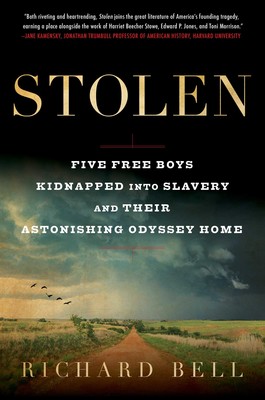
Cornelius Sinclair was ten years old and he was trapped. He was stuck in the belly of a small ship bobbing in the middle of the Delaware River, a mile south of Philadelphia. A man had grabbed him from a spot near that city’s market an hour ago, shoved a black gag across his mouth, tossed him into a wagon, and hauled him here.
It was dark below the waterline, but Cornelius could see enough to know that he was not alone. Four pairs of eyes stared back at him—four other black boys.
Yesterday they had all been free. Today they were slaves, prisoners of a gang of child snatchers who planned to sell their lives and labor, most likely to plantation owners in the Deep South. If the boys’ abductors got away with this, Cornelius would spend the rest of his life as someone else’s property somewhere very far away. He would never see his family again.
Cornelius disappeared from Philadelphia in late August 1825, about nine months short of the fiftieth anniversary of the signing of the Declaration of Independence in that city in the summer of 1776. So much had changed since then. The new nation’s population had tripled, topping ten million, its land area had more than doubled, and the number of states in the union had jumped from thirteen to twenty-four, all of them now latticed together by ever-expanding networks of roads, canals, and steamboat routes.
Slavery in America was changing too. In 1776, there had been enslaved people in every rebel colony, but by 1825, slavery was dead or dying in the North. Fewer than twenty thousand black northerners remained in bondage, most of them in rural parts of New Jersey and New York where slavery was on its last legs. In the South, it was a different story. Slavery remained profitable and popular there, and more than 1.75 million black southerners lived as slaves. Assuming office in March 1825, John Quincy Adams, the sixth president of the United States, presided over a union equally divided between free states and slave states, twelve of them apiece.
The Mason-Dixon Line, which separated Pennsylvania—a free state —from Maryland and Delaware—two slave states—seemed to split the nation in two. It served, in the words of its recent biographer, as “the closest thing to a modern international border anywhere in North America.”
Situated just 40 miles north of that border, Philadelphia was one of the nearest free cities to the slave South. That proximity made its many free black residents attractive targets for professional people snatchers from the slave states. They preyed on the members of the city’s black community relentlessly, putting bull’s-eyes on their backs and prices on their heads. Cornelius Sinclair was one of dozens of African American children to vanish from Philadelphia in 1825 alone. By then, the city was without question the hub of American slavery’s newest and blackest market. Its gridded streets and tangled alleys were hunting grounds for crews of professional kidnappers who made their livings turning free black folk like Cornelius into southern slaves. Philadelphia had long had a reputation as a safe haven for people of color, and was home to the headquarters of the American antislavery movement. But it was probably one of the most dangerous places to be a free black person anywhere in the United States.
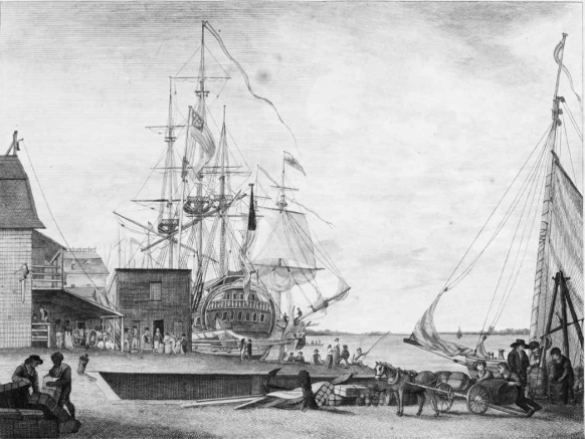
The people these kidnappers stole could each fetch anywhere from $400 to $700 ($9000 to $15,000 today) in Louisiana, Mississippi, and Alabama, three of the new territories and states rising up along the Gulf Coast. The American settlers swarming into that region demanded a bottomless supply of slave labor to cut sugarcane and pick cotton and would take almost anyone—including children as young as ten-year-old Cornelius. They may not have liked buying some of their slaves from kidnappers, but planters in the Deep South had few other options. They had been forced to look to sources within the United States for their labor needs ever since 1808, when lawmakers in Washington had outlawed slave imports from Africa and the Caribbean—a major turning point in the history of slavery in America. Interstate slave traders worked hard to satisfy these settlers’ demand for black labor, bringing them thousands of American-born slaves each year from states like Maryland, Delaware, and Virginia, but planters across the Deep South always wanted more.
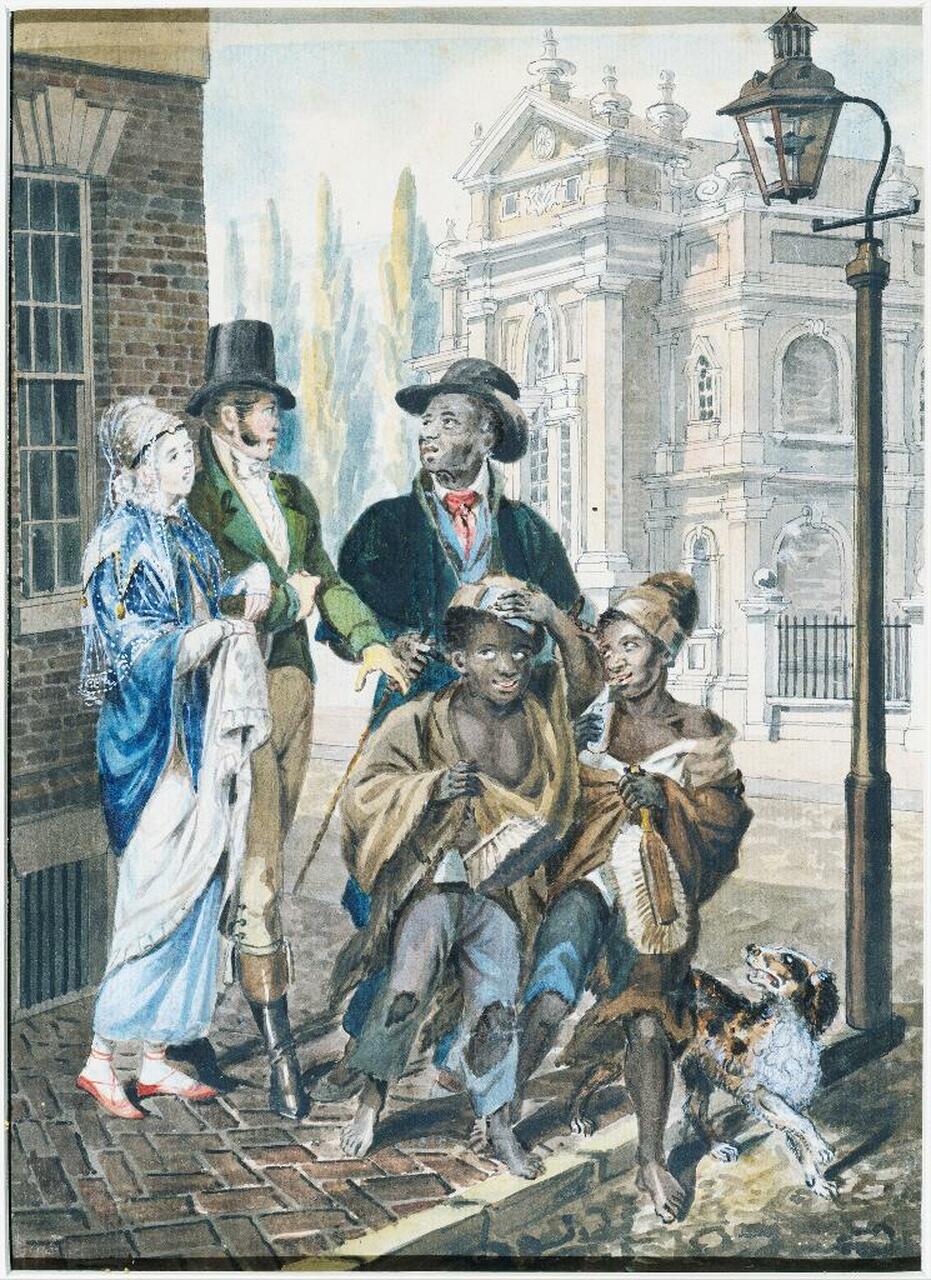
The more settlers were willing to pay, the more tempting and profitable it became for unscrupulous entrepreneurs to kidnap free people from northern cities, smuggle them into the legal supply chain, and sell them in this vast new southern slave market. These incentives left Philadelphia’s large and dynamic black community dangerously exposed, and by 1825 the city had become the center of an interregional kidnapping operation, the northern terminus of what we might usefully call the Reverse Underground Railroad.
This Reverse Underground Railroad and its better-known namesake, the Underground Railroad, ran in opposite directions but were mirror images of each other. On the Underground Railroad, enslaved people abandoned southern plantations and trekked northward, dreaming of new lives and opportunities in freedom. On the Reverse Underground Railroad, free black people vanished from northern cities like Philadelphia and were made to trudge southward and westward to be sold into plantation slavery. On the Underground Railroad, conductors like Harriet Tubman risked their lives and liberty to help black fugitives make these epic journeys. On the Reverse Underground Railroad, the conductors were kidnappers and human traffickers motivated by money.
The volume of traffic on the two railroads was roughly the same. Each one carried hundreds of black adults and children across state lines each year. Both networks roared to life in the early nineteenth century to exploit what by then had become major differences in the legal status of slavery in the North and the South. Both were loosely organized and opportunistic. Both ran on secrecy and relied on small circles of trusted participants, forged documents, false identities, and disguises. Whether traveling from the slave states into the free states or vice versa, black voyagers had to hide in stables, barns, cellars, and attics. The direction of travel was different, but the routes taken by freedom seekers and victims of kidnapping like Cornelius Sinclair were largely the same. They might even have passed one another on the roads from time to time.
Most Americans know something about the Underground Railroad. Scholars have spent decades studying the strategies and tactics that Harriet Tubman and her fellow conductors and station agents used to help freedom seekers escape from slavery. Accounts by former passengers and biographies of former participants have spurred immense interest not only in Tubman but also in her many comrades and collaborators. Their achievements saturate popular culture. There are walking tours, television shows, and museums dedicated to celebrating the men and women who, in the words of the National Underground Railroad Freedom Center in Cincinnati, “created the secret network through which the enslaved could escape to freedom.”
We know far less about the Reverse Underground Railroad. Its conductors and station agents worked tirelessly to remain untouchable, and the identities of all but a handful still remain a secret. Unlike Harriet Tubman, they never gave public lectures about their work or went on fundraising tours. Only rarely do their names and crimes appear in surviving police files or trial transcripts, their low profiles the result of the years they spent in the shadows, protected by bribes, avarice, and indifference. Unlike legal interstate slave traders who sometimes bequeathed their papers to southern colleges and historical societies, the outlaws who built the Reverse Underground Railroad left no business records or bundles of private letters for historians to read and examine. They did not write memoirs or pose for paintings or photographs. Their homes and warehouses no longer stand.
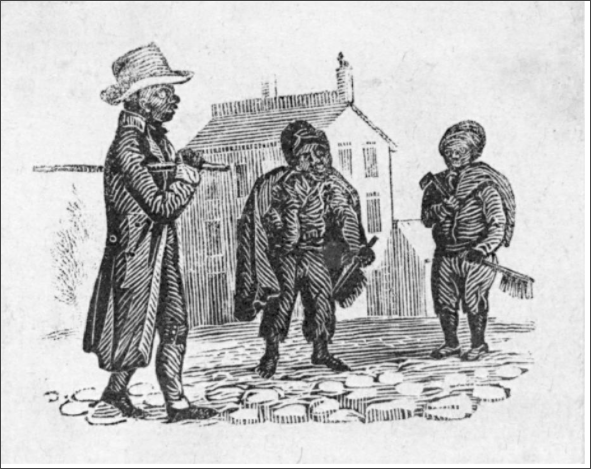
Yet these professional kidnappers left their mark everywhere. They stole away tens of thousands of free black people in the first six decades of the century, many of them children like Cornelius who were under the age of eighteen. Most of those kidnapped could not read or write and were never heard from again. Their families and friends searched, advertised, and petitioned. They waited in earnest for news, but usually nothing came. Beyond the meager ranks of a few Quaker-led antislavery societies, free black people in northern cities like Philadelphia had few white allies. White employers openly discriminated against African American job applicants, while city constables generally ignored people of color’s complaints and turned a blind eye to most white-on-black street violence. So when children like Cornelius went missing, their parents could rarely persuade mayors and magistrates to get involved. It was rarer still for anyone to be able to gather enough evidence to compel authorities to issue arrest warrants, search property, and interrogate suspects. Even then, experienced members of kidnapping crews knew what to do and what to say to talk their way out of trouble and get back to work.
Solomon Northup was one of only a few legally free people to experience the Reverse Underground Railroad, escape from southern slavery, and then return home to write about it. In Twelve Years a Slave (1853), Northup explains how, in 1841, a pair of well-dressed white con men lured him—a well-educated and prosperous musician in his mid thirties—into New York City from his home upstate. In Manhattan they wined, dined, and drugged him, then sold him to an interstate slave trader in Washington, DC. Northup was forced onto a slave ship bound for New Orleans and sold in one of the city’s infamous slave marts to a planter who put him to work in his cane fields. Though the 2013 Oscar-winning film based on Northup’s extraordinary autobiography drew overdue attention to his ordeal, both the memoir and the movie offer distorted and perhaps misleading views of who the agents of the Reverse Underground Railroad were, whom they usually targeted, and how they made money.
Northup’s experience was actually not at all typical. Most kidnappings were committed not by smartly dressed confidence men, but by poorer people who had never set foot in a fancy bar or restaurant.
Most of the kidnappers active on the Reverse Underground Railroad were men, though some were women. Most were white, but a surprising number were black. They rarely approached highly literate, middle-aged men like Northup. They preferred instead to lure away poorly educated children with ruses that could swiftly separate them from their families. Very few of their captives traveled by ship to New Orleans. Instead, kidnappers forced most boys and girls to trek southward on foot in small, specialized overland convoys known as coffles, after the Arabic word for “caravan.” Their prisoners rarely ended up in showrooms or on the auction block, and were vastly more likely to be sold off in ones and twos to planters in the Mississippi and Alabama Cotton Belt who could not afford New Orleans prices.
Unlike Northup’s experience, the full story of what happened to Cornelius Sinclair and the four other boys who went missing from Philadelphia in August 1825 has never before been told—and for understandable reasons. Cornelius was a child at the time and came from a hard-up family that was not the sort to leave behind traces in libraries and archives. This is a problem, of course, because historians need sources—and lots of them—to reconstruct past lives in ways that are fair and true. The stories and struggles of the many people who did not leave rich troves of papers, diaries, or memoirs often remain untold and unstudied as a result.
Any story about free children ripped from their families and swallowed up by slavery is worth telling for its own sake, but the remarkable ordeal that Cornelius and his four fellow captives endured demands attention for many other reasons. It serves as a pointed reminder that child-snatching was frequent, pernicious, and politically significant in the first half of the nineteenth century, and that black freedom in northern towns and cities was achingly fragile. It demonstrates too the important role that the traffic in kidnapped free people played in spreading slavery into the Deep South and in fueling the American economy over the same period.
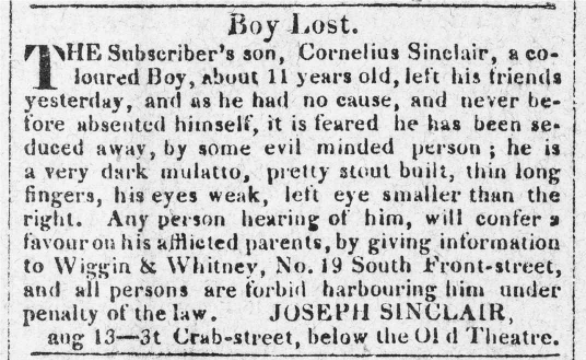
The dogged efforts of all those involved in trying to save these boys and others like them from the horrors of Southern slavery also had profound consequences. That campaign and its aftermath would radicalize black communities across the free states, emboldening African Americans to embrace violence in the cause of self-defense and mutual protection as never before. The case would reshape the rest of the antislavery movement as well by encouraging white abolitionists to focus the public’s attention on the suffering of black families forcibly separated by slavery.
Most immediately, outrage over the abduction of these five boys forced lawmakers in Pennsylvania to pass tough new anti-kidnapping measures. Those laws enraged southern slaveholders and set in motion a chain of retaliations that culminated in the passage through Congress of the Fugitive Slave Act of 1850, a bonanza for slaveholders that put the country on a collision course with civil war.
These events were the product of massive economic and political forces and would usher in a new chapter in the history of slavery and freedom in the United States. Yet this lasting legacy must not be allowed to obscure the urgent and elemental stakes of this particular story.
A ten-year-old boy and four other free children were dragged into slavery in 1825.
They would have to fight like hell to try to escape.

